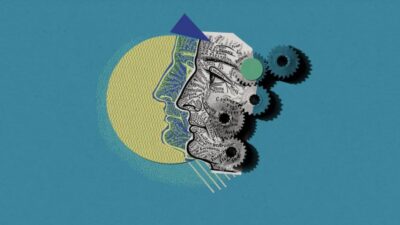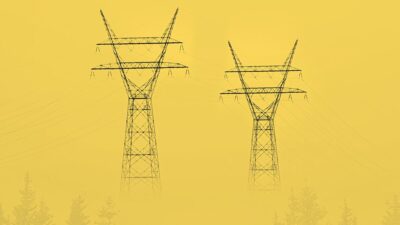We’ve had hundreds of questions from kids about coronavirus. Here are some answers.
What does the coronavirus look like? Why is it making people so sick? Does it make you turn green?
We asked kids to send in their questions about the coronavirus and hundreds of you did!
We wish we could have answered every question, but we didn’t have room.
Lots of you asked similar questions though, so maybe you’ll find the answer you were looking for here.
Beatrice asks: What kind of germ is coronavirus?
The coronavirus is a virus, a type of germ that can make you sick.
Viruses are a bit different to other types of germs like bacteria. Antibiotics can’t kill viruses.
The way a virus works is that once it’s in your body, it attaches to your cells (the little building blocks that make up your body) and uses the cells to make copies of itself.
Those copies then invade other cells and make more copies.
Viruses can kill, hurt or change cells, making you sick.
Withy asks: What does the germ look like?
The coronavirus is way too small for you to see with your eyes, or even a magnifying glass or a normal microscope. It’s about 1,000 times smaller than one of the hairs on your head.
But if you use a special microscope called an electron microscope, it looks like a little ball with spikes or petals sticking out of it.
When scientists first saw these spikes under their microscopes, they thought they looked like the outside layer of the Sun, which is called its corona.
In Latin, the word “corona” means crown.
This new virus isn’t the only one — it’s part of a big family of coronaviruses.
Ella asks: What do you think started the coronavirus?
Doctors in China started noticing people getting sick from a new type of virus at the end of last year.
The first few people who got sick from it were connected to a market, where lots of different animals were sold, in the city of Wuhan.
Other coronaviruses have started out in bats before they began infecting humans.
One of them passed from bats into an animal called a civet before it then started making humans sick, and another came from bats to camels to humans.
Scientists are pretty sure this new coronavirus came from bats too, and think it might have come through another animal, but they’re not sure which one yet.
Viruses can pass between animals and humans in the same way as we humans catch them from each other — by a human coming into contact with things like the animal’s blood, snot, spit, wee or poo.
A disease that jumps from animals to humans is called a zoonosis.
James asks: Why is the coronavirus also called COVID-19?
Coronavirus is the type of virus it is, but there are dozens of different coronaviruses in that group.
That’s why it’s you might have heard it called the novel coronavirus – novel just means new. Another new one could be discovered anytime, so that’s why it’s got its own name now.
COVID-19 is the disease it causes. It’s short for COronaVIrus Disease and 2019, the year it was first discovered.
The virus itself is actually called SARS-CoV-2. It gets this name from SARS, or Severe Acute Respiratory Syndrome, CoV for coronavirus, and 2 because there was an earlier coronavirus called SARS that started in 2002. But no-one has caught the first SARS from another person since 2004.
Courtenay asks: Why is it making people so sick?
Part of the reason the new coronavirus is making people so sick is because it’s brand new and no-one’s ever had it before.
When you get sick with a germ like a virus, your body learns how to fight it and makes a special type of defender called an antibody.
Those antibodies stick around and if that same germ comes back into your body, they’re ready to fight it. This means you don’t get sick from it again, or at least you don’t get as sick from it.
Because no-one’s had this coronavirus before, no-one’s body knows how to fight it.
Another reason it’s making people so sick is because it’s so new we don’t have medicines that can help people who are sick with it. But scientists are working hard to find the right medicines to help people who get sick with this coronavirus.
The third reason is that, in some people, COVID-19 causes a nasty reaction in the lungs, which means a small number of people need help to breathe using a hospital machine called a ventilator.
This isn’t the worst disease the world has ever seen, but it is worse than other viruses we get regularly, like the flu.
Each person who catches it can pass it on to about two or three other people, and more people are dying from this disease than the flu.
That’s why we need to take it so seriously.
Everett asks: How does it go into my body and out of my body?
This is a respiratory illness, which means it’s something that has to do with your lungs, throat, mouth and nose.
The germ that causes COVID-19 comes into your body from someone else through your nose, mouth or your eyes.
Those germs are usually in someone’s spit or snot, if they sneeze, cough or touch their mouth. If the little wet bits in that sneeze or cough get on you, or you pick them up from a table, a lift button, a door handle or any surface, and you then touch your face, these droplets can have enough of the virus in them to make you sick too
The tiny virus has even tinier spikes on it — like we said in the beginning, these look like a crown under the microscope.
Those tiny spikes fit like a puzzle piece into certain places inside your body, such as the cells in your lungs. Then they can use your body’s cells to make more copies of the virus.
These copies make you sick, and some of them can also come out in your snot and spit and make someone else sick.
That’s why it’s so important to:
- Wash your hands often (sing Happy Birthday twice at the sink to make sure you’re spending long enough washing) and don’t touch your face
- Stay away from sick people, and stay away from others if you’re sick
- Cough or sneeze into your elbow or a tissue, and wash your hands
- Stay away from other people, just in case you or they have the virus and don’t realise it
Estelle asks: When can I see my grandparents?
It can be really hard to stay away from people you love, especially grandparents.
But one of the things we know about COVID-19, the disease caused by this new coronavirus, is that it’s most dangerous for people who are older.
People who are more than 70 years old, and people who already have problems with their lungs or heart or other health problems, are more likely to need to go to hospital if they get COVID-19. Some of them can even die from it.
And because we don’t have medicines yet to help protect these people, we have to help protect them by staying away – just in case we have the virus and don’t realise it.
We’re really lucky that we live in a time where it’s easy to chat to and see the people we love, even if we can’t be in the same place as them.
Maybe you could talk to your grandparents or older people that you love through video chat, talk on the phone or write a letter or email to them.
This won’t last forever, but we have to be extra careful just for now.
Finny asks: When will the coronavirus end?
It looks like the coronavirus will be a germ that’s just in the world that people catch from each other from now on, a bit like colds or the flu.
But it won’t be as dangerous as it is now forever.
Scientists and doctors are working really hard to find a vaccine for it — so you could get a needle like you get to prevent some other sicknesses to make sure you don’t get it in the first place.
They’re also looking for medicines that make the sickness not so bad if you do get it.
But one of the reasons we’re all staying home at the moment is that they don’t have those medicines yet, so we’ve got to stop people from getting it as much as possible until those medicines are ready.
That might take a while — maybe a month, maybe a couple of months, maybe even a year.
Reggie asks: Does the coronavirus make you turn green?
It might make you feel a bit “green around the gills”, because some people with COVID-19 feel sick in their tummy and might vomit.
But even though there are some things that can make us feel a bit worried about the coronavirus, actually turning green in real life isn’t something you need to be worried about!
Thanks to Associate Professor Ian Mackay from the University of Queensland and the ABC’s Dr Norman Swan for their help with this story.









